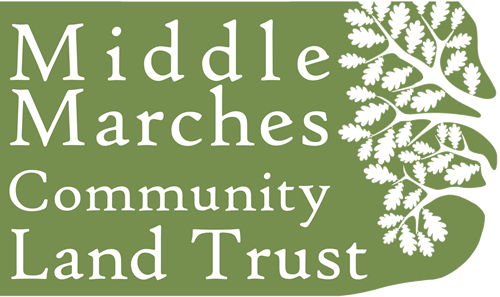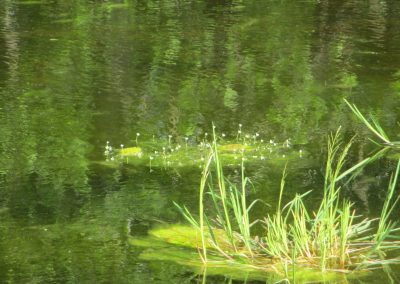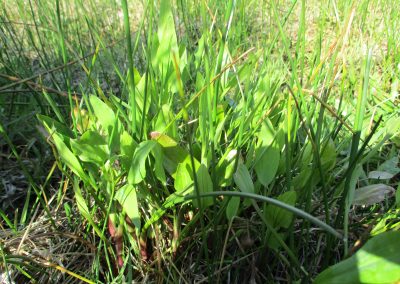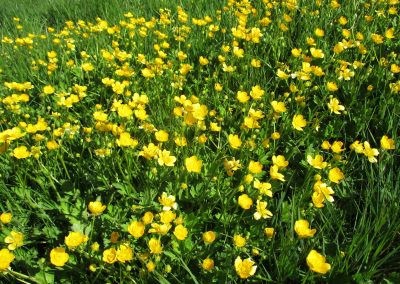Buttercups, Martins and Yellow Rattle
By Rob Rowe (May 2020)
Swallows and House martins seem to have been scarcer than ever this year, so suddenly, for the first time, to be surrounded by them is a pure joy
30, 40, 50 of them swooping low above the grass and flinging themselves high…exhilarated, I swoop with them. Thank you for coming !
The new pool is so alive its hard to think it was dug only a year ago. The stream is still running in at a small trickle and the water is clear. Already there are small kelp like forests of Curled pondweed with its distinct long wavy leaves and dainty threads of Water starwort.

A small red damselfly hunts and rests in the warm sun and shimmering clouds of midges dance in tight formation.
Rafts of green algae form floating platforms which, powered by the breeze, ferry the Flote grass and the tiny white Water crowfoot slowly around the pool.
It’s a day for the Buttercups, the Ranunculus family. Six species of them, in fact. Three are plants of water or wet places. The small flowered Water crowfoot is way out in the pond. It is difficult to identify these species even when close and without taking my shoes and socks off and wading in it is going to stay that way.
The small flowered Celery leaved buttercup is unusual in this area and is growing alone on the pond side mud. Lesser spearwort not yet in flower but flaunting the upright leaves which give it the name.
In one patch of the field Meadow, Creeping and Bulbous buttercups grow side by side ready to give a botany lesson. I took a photo but it does not do justice to the differences.

Yellow rattle
Last year some of this pond’s excavated soil had green hay from a couple of local meadows strewn on it.
Green hay is grass which is cut (ideally from a species-rich site) then transported immediately to the new site. Ideally, this brings with it the seed of several species and ‘kick starts’ a new species-rich meadow. It is both a science and an art to be successful at this!
The Yellow rattle is thriving and already flowering.
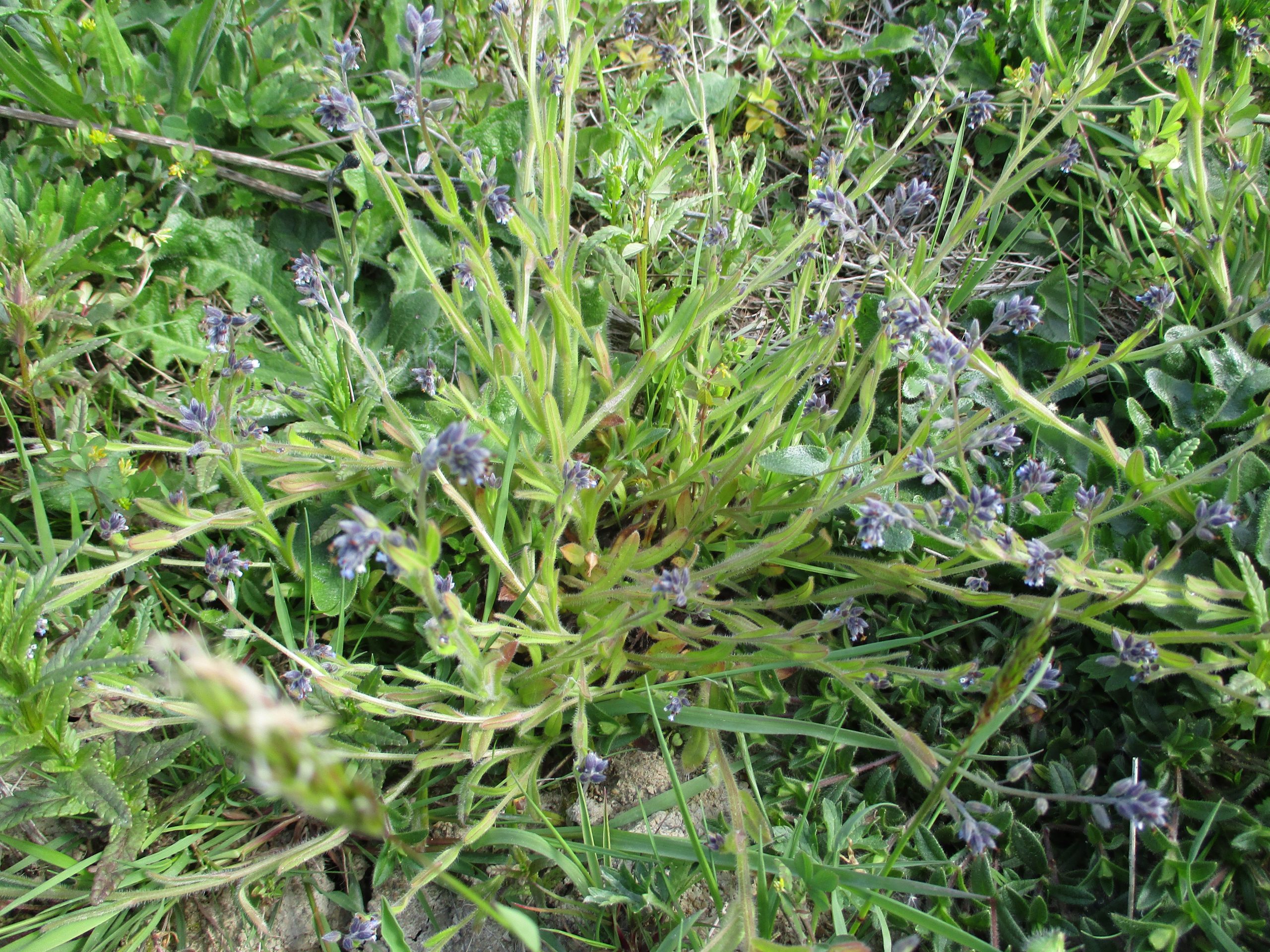
Changing forget me not
Changing forget me not is another annual which is doing well. Its tiny flowers change from yellow to blue. Other plants from that green hay already visible are Common knapweed, Catsear, Lesser trefoil, and Mouse ear chick weed.
